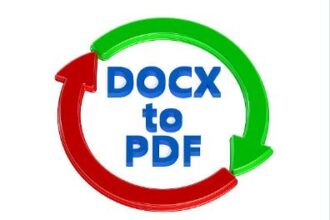9. online assessment platform https://interviewvector.com/blogs/online-assessment-platforms/ interview as a service https://interviewvector.com/
Online assessment platforms have emerged as the foundation of contemporary evaluation methods in the quickly changing educational and professional scene of today. The platform you select may make or break your evaluation process, whether you’re a corporate trainer assessing staff competency, an educator looking to analyze student development, or an organization conducting recruiting exams. In addition to creating new opportunities, the transition from conventional paper-based testing to an online assessment platform has also brought out new difficulties. A number of aspects that directly affect the efficacy, dependability, and general success of your assessment endeavors must be carefully considered in order to make the best decision.
⦁ Enhanced Security and Data Protection
Security is undoubtedly the most important consideration when choosing an online platform as it is the foundation of any reliable assessment system. Multiple layers of security mechanisms, such as secure user authentication, encrypted data transfer, and thorough audit trails that document every contact during the testing process, are used by a reliable assessment platform. More developed platforms contain the components that interfere with cheating and illicit access, including real-time monitoring, plagiarism-checking software, and the aptitude to lock browsers. The data protection standards that are current across the world have to be adhered to so as to protect sensitive assessment data, including test questions, student answers, and performance statistics. Businesses should ensure that the platform they have chosen to use observes strict confidentiality policies and state clearly on their security measures and incident management plans.
⦁ Seamless User Experience and Interface Design
How well participants can show their actual talents during exams is largely determined by the user experience. An easy interface on a well-designed platform reduces technological obstacles and frees test-takers to concentrate solely on the material rather than difficult navigation. Clear instructions and logical flow patterns lessen uncertainty and anxiety, while responsive, clean design features guarantee compatibility across a range of devices and screen sizes. Through typeface changes, screen reader compatibility, and adjustable display choices, the platform should support various learning methods and accessibility requirements. Usability must be given similar weight in administrative interfaces so that administrators and teachers can efficiently prepare, edit, and administer tests without needing a lot of technical assistance or training.
⦁ Comprehensive Analytics and Performance Insights
Modern assessment instruments transform raw data into actionable knowledge using up-to-date analytics functions to provide profound insight on performance patterns, learning trends, etc. Advanced reporting options allow teachers and administrators to analyze students by progress, identify knowledge gaps and analyze group results in many different ways, including time spent, question difficulty and clustering of responses. Immediate decisions and intervention strategies become easy as dashboards show key metrics in an aesthetically pleasing manner. The platform is supposed to offer customizable report generation, which allows the users to match previous data and focus on the indicators that are relevant to their objectives. Beyond only scoring, these analytics tools offer predictive information that may be used to pinpoint students who are at risk and improve assessment methods in the future.
⦁ Flexible Assessment Creation and Customization Options
Any successful online platform must have the capacity to develop varied, captivating tests that are suited to certain learning goals. Many question types, including multiple choice, essay replies, drag-and-drop interactions, multimedia integration, and scenario-based simulations that mimic real-world applications, are available on superior platforms. Timing of assessments, scoring systems, feedback distribution, and adaptive questioning that modifies difficulty in response to participant replies are all examples of customization. In order to maintain version control and quality assurance requirements, the platform should facilitate collaborative content production, enabling several instructors to examine materials and provide questions. While guaranteeing uniformity across many tests and academic divisions, template libraries and question banks expedite the development process.
⦁ Reliable Technical Support and Platform Stability
The other aspects of the platform are dependent on the technical reliability hence effective delivery of assessments is based on responsive customer services and stable performance. Through automated backup systems, redundant server infrastructure and proactive monitoring and locating and correcting issues before users notice, a robust platform can manage high percentages of uptime. Comprehensive technical assistance can include a wide array of contact channels, such as live chat, phone support or extensive reference libraries with commonly asked questions and troubleshooting situations. The support staff must be informed about assessment best practices, but also knowledgeable about technological challenges and be able to provide more than a simple solution to a simple problem. Frequent maintenance plans and platform updates guarantee ongoing compatibility with changing security risks and technological requirements.
⦁ Cost-Effectiveness and Value Optimization
Budgetary limitations significantly affect choice of the platforms hence cost-effectiveness analysis plays a crucial role towards long-term, sustainable success in implementation. It is economically more practical to determine the total cost of ownership, considering such factors as installation fees, education, ongoing maintenance, and configuration fee as opposed to merely the license fees involved at the beginning. Transparent pricing models can help a business efficiently budget as they help to avoid unexpected costs of additional services or of user capacity increases. It needs to do comparisons of sets of features, based around different price points, to optimize the value, and ensure that core features are a priority rather than higher end inclusions which may not be able to be enjoyed soon. Many of them have customizable pricing plans that can be adjusted to various organizational scales and test quantities, e.g. in the form of usage-based billing, yearly subscriptions, per-user fees.
⦁ Scalability and Growth Accommodation
Platforms that can scale smoothly without sacrificing performance or necessitating total system redesigns are necessary due to organizational expansion and evolving assessment requirements. By using a flexible architectural design that grows with an organization, a scalable platform can be used with an increase in user load, length of question banks and features demanded by organizations. Cloud-based solutions tend to scale, assign resources autonomously, and be globally accessible, when compared to on-premises installations: this benefits dispersed firms and distance learning.
Conclusion
The selection of your online assessment platform needs to take these essential features into account as they all influence the overall effectiveness and success of your evaluation endeavor. In terms of tracking the learning results, identifying the gaps, and promoting the corporate or education initiatives, the relevant Interview as a Service platform is a valuable companion. Security, user experience, analytics, customisation, dependability, cost-effectiveness, scalability and integration capabilities are some of the factors that organisations should consider first as they can make an informed decision that will address security and the assessment needs today and in the future.

















